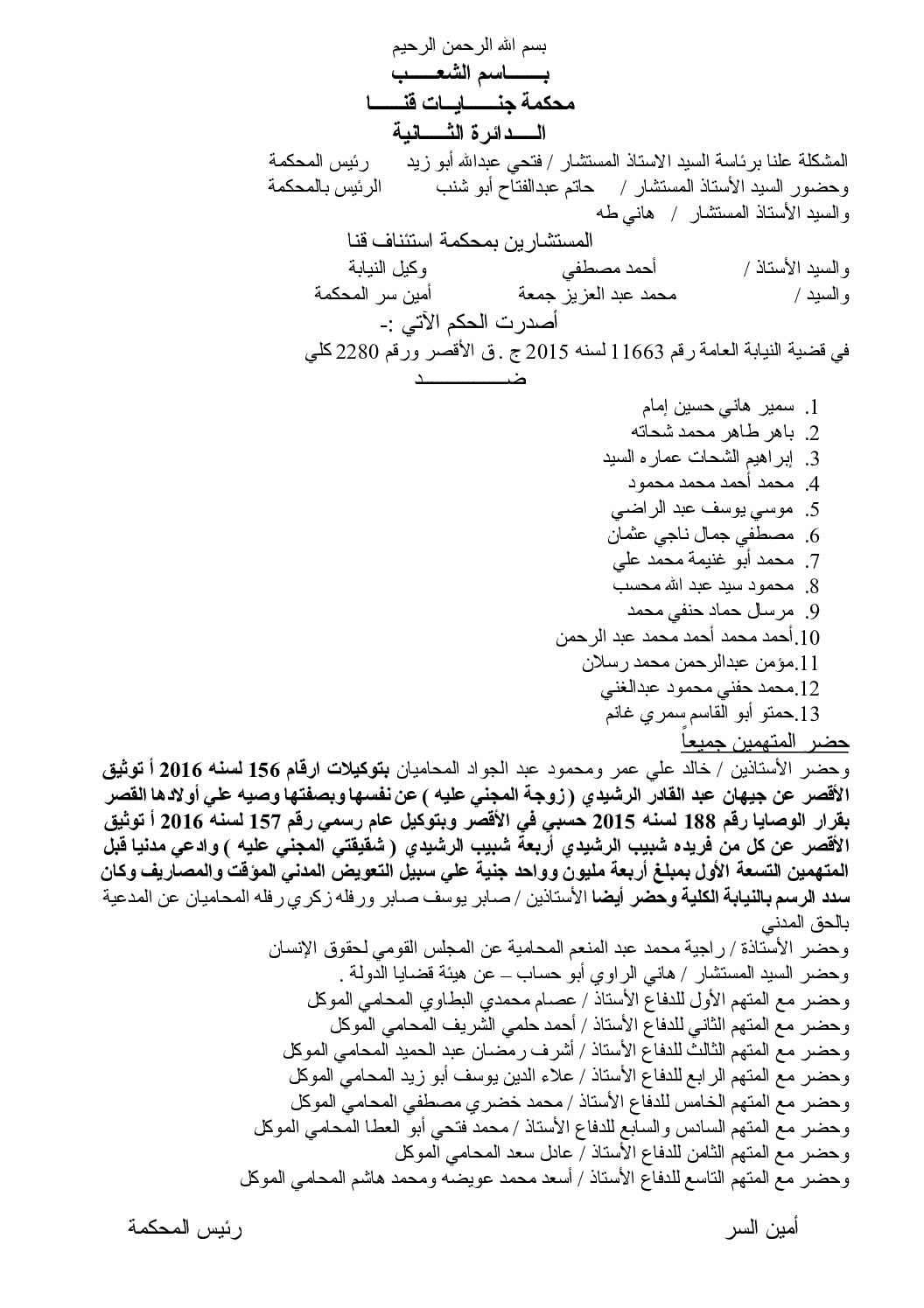Criminal justice | Challenging Doma’s Appearance in Glass Dock during Hearing the Cabinet Clashes Case

Ahmed Doma, a political activist, and the lawyer Khalid Ali submitted today a challenge against the appearance of the former inside a dark glass dock in the court hearing held on August 4, 2014. The challenge was introduced by the complaint No. 1886 of 2014 filed yesterday to the Supreme Judicial Council.
The challenge stated that such a glass dock prevents the defendant from communicating with the outside world “the courtroom”, as it is equipped with an electronic voice circle that is electronically controlled by the Court Circuit Judge. The result is the inability of the accused to listen to what is going on, take note of the trial proceedings and to defend himself if necessary—an inalienable right to the defendant. Further, it disrupts communications between the first appellant and the second, which is a flagrant violation of the provisions of the Constitution and the law. It is a breach of the public safeguards enshrined to protect the defendant and his right to a fair trial and his lawyer’s right to defend the case in accordance with the guarantees contained in the Attorney Act.
The Court considered on Wednesday, October 1, 2014, the first hearing of the case No. 721/2014 lodged by Doma’s defense team, which consisted of Khalid Ali, Nasser Amin, Ragia Omran, in addition to the lawyers of ECESR, Nadeem Center for the Rehabilitation of Victims of Violence, the Arabic Network for Human Rights Information, and the National Community for Human Rights. The defense team filed the lawsuit against the court bench itself for committing serious professional errors during the court proceedings, including:
- Refraining from reviewing all the case documents and denying the defense’s substantive motions;
- Refraining from enforcing the provisions of law intentionally;
- Overlooking the facts of assaulting the defendants released and then preventing them from attending the trial hearings;
- Breaching the principle of public trial;
- Prejudicing the right of the accused to take note of all the court proceedings without a decision to that effect;
- Cruel treatment against the accused Ahmed Doma;
- Paying no attention to the disappearance of some documents annexed to the case in previous hearings and before different bench.;
- Denying the military prosecutor’s investigations in spite of the Magistrate’s reference to these investigations as well as the witnesses’ statements that they were interrogated by the military prosecutor.
It is worth mentioning that Doma has been kept in custody after being sentenced, along with the co-defendants Ahmed Maher and Mohamed Adel, to prison for 3 years and a fine of 50 thousand pounds for each. They were accused of assaulting security forces on Nov 30, 2014 during the clashes occurred in Abdin Court neighborhood.
He is tried among other 269 co-defendants, 16 of them in custody and 9 at large, while the rest have been released in the case known as the “Council of Ministers Clashes,” which occurred in December 2011. Doma’s health has been deteriorated as a result of a number of diseases and the hunger strike he went on along with a number of political prisoners. In this context, a number of activists outside the prison went on a hunger strike in solidarity with the prisoners in order to be released.
The prosecutor charged the 269 people with, inter alia, setting fire on the Scientific Academy, destroying facilities, assaulting policemen and so on of the ready-made charges leveled haphazardly in such cases.
The clashes started when armed forces cracked down on the sit-in held in front of the Council of Ministers after crushing the sit-in held in Tahrir square, known as Mohamed Mahmoud Street clashes, which occurred on November 19, 2011 and left up to 40 dead. The clashes sparked massive demonstrations in Tahrir Square and other areas in Egypt over the week. Some of the protesters continued their sit-in in Tahrir Square and then moved to the headquarters of the Egyptian Cabinet in protest at the appointment of Dr. Kamal Ganzouri as Prime Minister, and the massacre of Mohamed Mahmoud.
The clashes began with the dawn of December 16, 2011 when a protester was kidnapped by the security forces stationed within the Council of Ministers to secure it. Beating the kidnapped protester severely and then releasing him fueled anger and outrage that led to skirmishes and clashes between security forces and protesters.
The clashes that ended in December 23 left 17 people killed, including Sheikh Emad Effat, Dr. Alaa Abdel Hadi and 1917 injured. The captured protesters were tortured within the Shura Council, including girls (many of them are defendants in those clashes). In spite of the pictures and videos proving the involvement of some personnel in the acts of killings, torture, kidnapping and assault, no one of the police and military personnel was arraigned.

